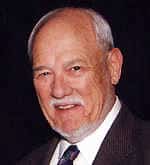 By ANDY ANDREWS
By ANDY ANDREWS
Los Alamos World Futures Institute
In parts one and two of this series we examined the acceleration of communication among humans in the period from around 3,250 B.C until the late 1940’s A.D.
Then we noted the development of the digital computer and the emergence of the transistor. While these developments did not immediately affect communication, they were essential to a communication explosion, especially the 1959 the metal-oxide-semiconductor field-effect transistor (MOSFET).
While the great majority of us have no idea of what a MOSFET is, it was the enabling technology for computer networking.
As noted in Part Two, the Advanced Research Project Agency began its NETwork (ARPANET) in 1966. In 1969 it became operational, linking computers at the University of California Los Angeles (UCLA), the University of California Santa Barbara (UCSB), Stanford Research Institute (SRI), and the University of Utah (UTAH).
The key factor of this network was that if the UCLA computer wanted to communicate with the SRI computer, the network had to direct the data (information) flow from UCLA to SRI and perhaps do it while UCSB was communicating with UTAH. And there were no manual switches to route the data.
Now jump ahead 10 years. In 1979, Japan created the first analog cell phone network. A radio signal from a phone had to be routed electronically to another phone either electronically or through a landline and allow two-way communication between people. The networks were growing and people were sensing a need for better communication to share information. Move ahead another 12 years and the first digital cell phones were introduced in Finland. This was another big step forward because digital meant smaller data packages were transferred.
Just before the analog cell phone, personal computers were introduced to the public. I remember my first “PC,” a Commodore 64 that I rigged with a carbon ribbon typewriter to send out multiple different application letters. It was easier to reproduce content but distribution remained slow (the mail). But shortly thereafter I got a “real PC” and a 300 baud modem. Now from home I could communicate on-line. I could download or upload an 800 word document at five letters per word in about 16 seconds. And if it was available, I could have downloaded a one hour 30 minute movie in about 39 days. Yes, it was very slow, video tape was better, but it was a start.
The technology advanced and the speed for communication increased meaning that the challenge for traffic management grew. Along came the World Wide Web (WWW) and the protocols most of us use today, even if unaware. Tim Berners-Lee is credited with creating the system in 1989, but it took a little time for its adoption. Everything was in place, simply waiting of faster technology, except the machine had to be physically connect to the Internet ”wires.” Yet the “magic” cell phones could use a wireless connection even if they were “dumb” devices.
By the end of the century (1999), Wi-Fi was in the computer chatter. At the local level, a device could wirelessly connect to a box that was connected by wire to the Internet. Both the telephone system and the Internet are based on wiring and switches; it is simply the content that is different, or is it? Once in the digital domain you are transferring bits and bytes from one-to-one, one-to-many, and many-to one, many to many, and every other possible pattern. But you still need a computer and/or a cell/telephone to use the networks, a truly limiting factor.
The in 2007, the smart phone had debuted. The “new” cellphone could provide more than just voice or texting. It could perform some computer function, use sensors, run software, wirelessly talk to computer networks using Bluetooth and Wi-Fi, and perform satellite navigation. The cellphone was “smart,” even if a human being had to operate it. With all of this connection capability, what do you do with it? While one can point to the integration of a scientific calculator into the phone, it is access to the World Wide Web that is significant. Human beings now can be plugged into the web as long as they are in an area with “service” and have a smartphone.
There are many applications on the Internet for use with your computer be it a desk top, laptop, tablet, or smartphone. These applications are for creating, transmitting or receiving information. Sometimes you install the app on your device and sometimes you use it through another device using a web browser interface. Some examples of these information apps include Myspace, Facebook, Tik Tok, Twitter, Instagram, LinkedIn, YouTube and Pinterest. Myspace was a social networking site launched in August 2003. Facebook, launched in September 2006, and overtook Myspace in user count in April 2008. Today, people are likely to know Facebook since it has 2.7 billion user accounts in a world of 7.6 billion people.
Theoretically, every Facebook account (user?) could post information that could go to all 2.7 billion accounts every day. This would amount to 7.29 quintillion (billion billion) information packets per day being communicated. Obviously as an individual human you cannot read, sort, analyze or whatever, 2.7 billion information packages a day. What do you do?
Til next time…
Los Alamos World Futures Institute website is LAWorldFutures.org. Feedback, volunteers and donations (501.c.3) are welcome. Email andy.andrews@laworldfutures.org or email bob.nolen@laworldfutures.org. Previously published columns can be found at www.ladailypost.com or www.laworldfutures.org.

